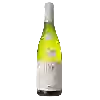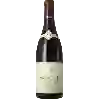
Winery Jean Pascal & FilsCrémant de Bourgogne Brut
In the mouth this sparkling wine is a powerful with a nice vivacity and a fine and pleasant bubble.
This wine generally goes well with poultry, appetizers and snacks or lean fish.
Taste structure of the Crémant de Bourgogne Brut from the Winery Jean Pascal & Fils
Light | Bold | |
Soft | Acidic | |
Gentle | Fizzy |
In the mouth the Crémant de Bourgogne Brut of Winery Jean Pascal & Fils in the region of Burgundy is a powerful with a nice vivacity and a fine and pleasant bubble.
Wine flavors and olphactive analysis
On the nose the Crémant de Bourgogne Brut of Winery Jean Pascal & Fils in the region of Burgundy often reveals types of flavors of microbio.
Food and wine pairings with Crémant de Bourgogne Brut
Pairings that work perfectly with Crémant de Bourgogne Brut
Original food and wine pairings with Crémant de Bourgogne Brut
The Crémant de Bourgogne Brut of Winery Jean Pascal & Fils matches generally quite well with dishes of shellfish, poultry or appetizers and snacks such as recipes of mussels with cream, leek and fresh salmon tart or aperitif puff pastries with vire andouille sausage.
Details and technical informations about Winery Jean Pascal & Fils's Crémant de Bourgogne Brut.
Discover the grape variety: Plant droit
Plant droit noir is a grape variety that originated in France (Provence). It produces a variety of grape specially used for wine making. It is rare to find this grape to eat on our tables. This variety of grape is characterized by medium-sized bunches and medium-sized grapes. The Plant droit noir can be found in several vineyards: South-West, Cognac, Bordeaux, Provence & Corsica, Rhone valley, Loire valley, Savoie & Bugey, Beaujolais, Languedoc & Roussillon.
Informations about the Winery Jean Pascal & Fils
The Winery Jean Pascal & Fils is one of of the world's great estates. It offers 17 wines for sale in the of Crémant de Bourgogne to come and discover on site or to buy online.
The wine region of Crémant de Bourgogne
Recognized in 1975, the appellation crémant-de-bourgogne replaced the Sparkling wines whose quality was not very homogeneous. Its geographical area, very vast, covers more than 300 communes, of Châtillonnais, with the borders of Champagne auboise, with Beaujolais included. The AOC imposes conditions of harvest and elaboration as strict as those of the Champagne region and copied on this one, the difference residing in the duration of Maturation on lees, which is of nine months minimum, against twelve for the champagne. The Grape varieties used also bring Crémant-de-Bourgogne closer to its illustrious Champagne model, for although all the varieties of the region can be used, Pinot Noir and Chardonnay are favoured.
The wine region of Burgundy
Bourgogne is the catch-all regional appellation title of the Burgundy wine region in eastern France ("Bourgogne" is the French name for Burgundy). Burgundy has a Complex and comprehensive appellation system; counting Premier Cru and Grand Cru titles, the region has over 700 appellation titles for its wines. Thus, Burgundy wines often come from one Vineyard (or several separate vineyards) without an appellation title specific to the region, Village or even vineyard. A standard Burgundy wine may be made from grapes grown in one or more of Burgundy's 300 communes.
The word of the wine: Phylloxera
Aphid that came from America and ravaged European vineyards at the end of the 19th century. It lives on the roots of the vine, from which it pumps the sap. The only vines capable of resisting it had to be imported from the United States, and then grafted onto their root system the wood of traditional French grape varieties. Today, grafted vines are always planted.














